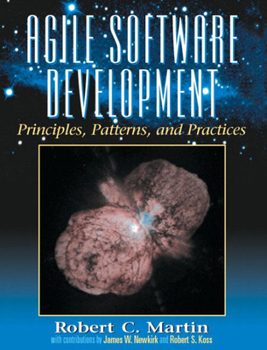Agile Software Development, Principles, Patterns, and Practices
Select Format
Select Condition 
Book Overview
Written by a software developer for software developers, this book is a unique collection of the latest software development methods. The author incudes OOD, UML, Design Patterns, Agile and XP methods with a detailed description of a complete software design for reusable programs in C++ and Java. Using a practical, problem-solving approach, it shows how to develop an object-oriented application -- from the early stages of analysis, through the low-level design and into the implementation. Walks readers through the designer's thoughts -- showing the errors, blind alleys, and creative insights that occur throughout the software design process. KEY TOPICS: Covers: Statics and Dynamics; Principles of Class Design; Complexity Management; Principles of Package Design; Analysis and Design; Patterns and Paradigm Crossings. Explains the principles of OOD, one by one, and then demonstrates them with numerous examples, completely worked-through designs, and case studies. Covers traps, pitfalls, and work arounds in the application of C++ and OOD and then shows how Agile methods can be used. Discusses the methods for designing and developing big software in detail. Features a three-chapter, in-depth, single case study of a building security system. MARKET: For Software Engineers, Programmers, and Analysts who want to understand how to design object oriented software with state of the art methods.





